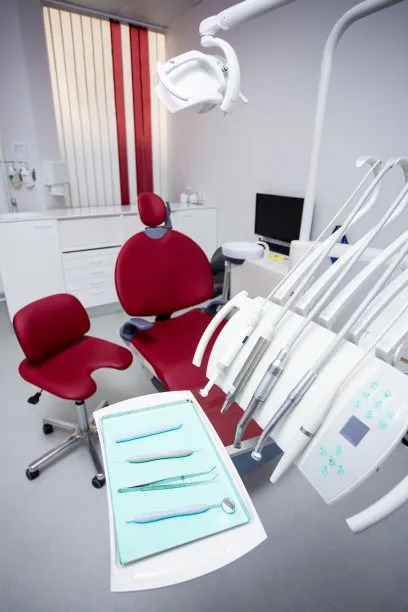Understanding the Process and Importance of Extracting a Tooth for Dental Health and Well Being
Summary: Tooth extraction is often perceived negatively, yet it plays a crucial role in maintaining dental health and overall well-being. This article elaborates on the process of tooth extraction, its indications, the benefits it offers in restoring dental health, and essential aftercare practices. By understanding these components, patients can appreciate the significance of this dental procedure and its impact on their oral hygiene. With thorough insights provided, individuals can make informed decisions regarding their dental care and enhance their quality of life.
1. Reasons for Tooth Extraction

Tooth extraction is typically performed for several reasons, the most common one being tooth decay. When a tooth is severely decayed and cannot be restored, extraction becomes necessary. Decay can lead to infections that not only threaten the affected tooth but can also impact neighboring teeth and overall oral health. Therefore, removing the compromised tooth is essential to prevent further complications.
Another prevalent reason for tooth extraction involves problematic wisdom teeth. Often these teeth become impacted, leading to pain, infection, and potential misalignment of surrounding teeth. As such, dental professionals recommend their removal as a preventive measure to maintain dental harmony and avoid more invasive treatments later.
Moreover, tooth extraction may be essential in cases of overcrowded teeth. Orthodontic treatment often necessitates removing certain teeth to create enough space for proper alignment. Thus, tooth extraction plays a critical role in facilitating effective orthodontic procedures and achieving optimal positioning of the remaining teeth.
2. The Extraction Process Explained
The tooth extraction process begins with a thorough examination by the dental professional. This may include X-rays to determine the position of the tooth and the surrounding bone structure. Understanding these factors is vital to the planning and execution of a successful extraction. Appropriate anesthesia options, such as local or sedation anesthesia, are discussed to ensure the patients comfort throughout the procedure.
Once the anesthesia has taken effect, the dentist will proceed with the extraction, which may involve loosening the tooth from its socket using special instruments. For more complicated extractions, such as those involving impacted teeth, surgical techniques may be necessary. This could involve making incisions in the gum tissue to access the tooth more effectively.
After the tooth is carefully removed, the dentist will provide instructions for post-extraction care. This includes information on bleeding control, pain management, and signs of potential complications. Adequately following these guidelines is crucial for ensuring a smooth recovery process and preventing any adverse effects.
3. Benefits of Tooth Extraction for Dental Health
Tooth extraction can significantly improve overall dental health by preventing the spread of infection. When a tooth is beyond restoration due to decay or damage, keeping it in place poses a risk not only to the individual tooth but also to the entire mouth. By extracting it, patients can avoid the potential for serious infections that could necessitate more complicated dental procedures.
Furthermore, tooth extraction can enhance the effectiveness of orthodontic treatment. By creating the necessary space in a crowded dental arch, it facilitates the alignment of remaining teeth. In this way, extraction contributes to achieving a more functional bite and an aesthetically pleasing smile.
Additionally, tooth extraction can lead to improved overall health. If left untreated, dental issues can result in chronic pain, difficulty eating, and systemic health problems. By addressing these issues promptly through extraction, patients can regain their ability to eat comfortably and maintain their health without the burden of dental distress.
4. Essential Aftercare Following Extraction
After a tooth extraction, proper aftercare is essential for a smooth recovery. Patients should follow their dentist’s instructions, including managing bleeding by biting down on a gauze pad and avoiding strenuous activities for the first 24 hours. Keeping the extraction site clean is crucial to prevent infection; gentle rinsing with warm salt water may be advised after the first day.
Pain management is another fundamental aspect of recovery. Dentists may recommend over-the-counter pain relievers or prescribe stronger medication if necessary. It is vital to follow dosage instructions and to contact the dentist if pain persists or worsens, signaling potential complications.
Lastly, patients must be aware of signs indicating that something may be wrong. Symptoms such as excessive swelling, increased pain, or fever should prompt an immediate consultation with the dental professional. Addressing concerns timely can mitigate long-term issues and promote a faster, healthier recovery.
Summary:
Tooth extraction serves as a critical procedure in preserving dental health and overall well-being. By understanding the reasons behind the need for extraction, the process involved, its benefits, and the importance of aftercare, individuals can better navigate their dental journeys. A proactive approach to dental health leads to enhanced quality of life and fewer invasive treatments in the future.
This article is compiled by Vickong Dental and the content is for reference only.


